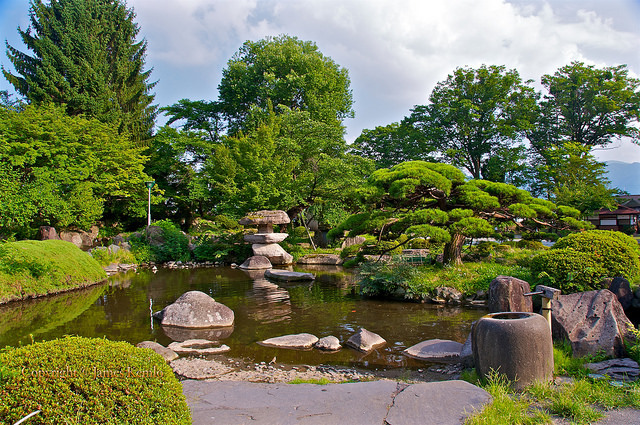The Japanese garden with its restraint, order, harmony and decorum is an expression of the Japanese
The Japanese garden with its restraint, order, harmony and decorum is an expression of the Japanese love for nature. It exemplifies an acceptance of the transience of nature reflected in the changing seasons. With the use of ponds with scatterings of stones representing islands in a Japanese garden, the Japanese confirm their identity as an island people. These gardens with large ponds at the centre became popular with aristocratic life when the imperial court was moved to Kyōto at the end of the 8th century. When the first imperial palace was constructed in Kyōto, a garden was built around a sacred spring at the southern end of the palace. This garden included a large pond with a scared island. Aristocratic gardens all over Kyōto were all modelled on this imperial prototype, and the style spread eventually to other regions. A typical palace was arranged to face the south, looking out onto an open expanse of the pond, with carefully created stone and pebble sandbanks. Channels were dug so that nearby rivers and streams could feed into the pond from one corner of the garden. These little channels were often directed to pass under several roofed, wooden corridors of the palace, providing a natural cooling effect from the long, humid heat of Kyōto summers. These little channels were embellished with small smooth stones, arranged in an undulating fashion so as to simulate a rippling stream. around it the terrain was made to undulate gently, mimicking the hills and mountains of Kyōto. © James Kemlo -- source link
Tumblr Blog : hayakawajunpei.tumblr.com
#garden#nature#kyōto
